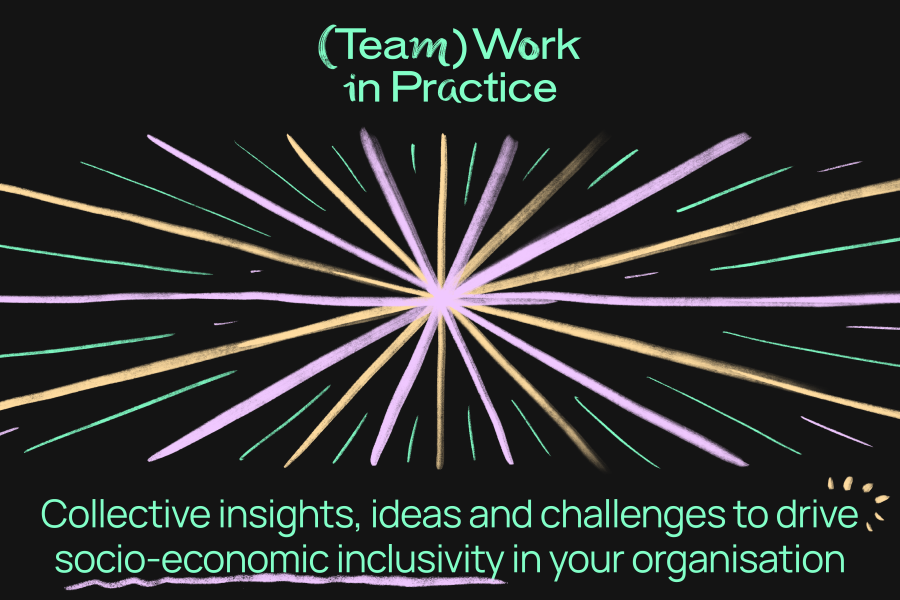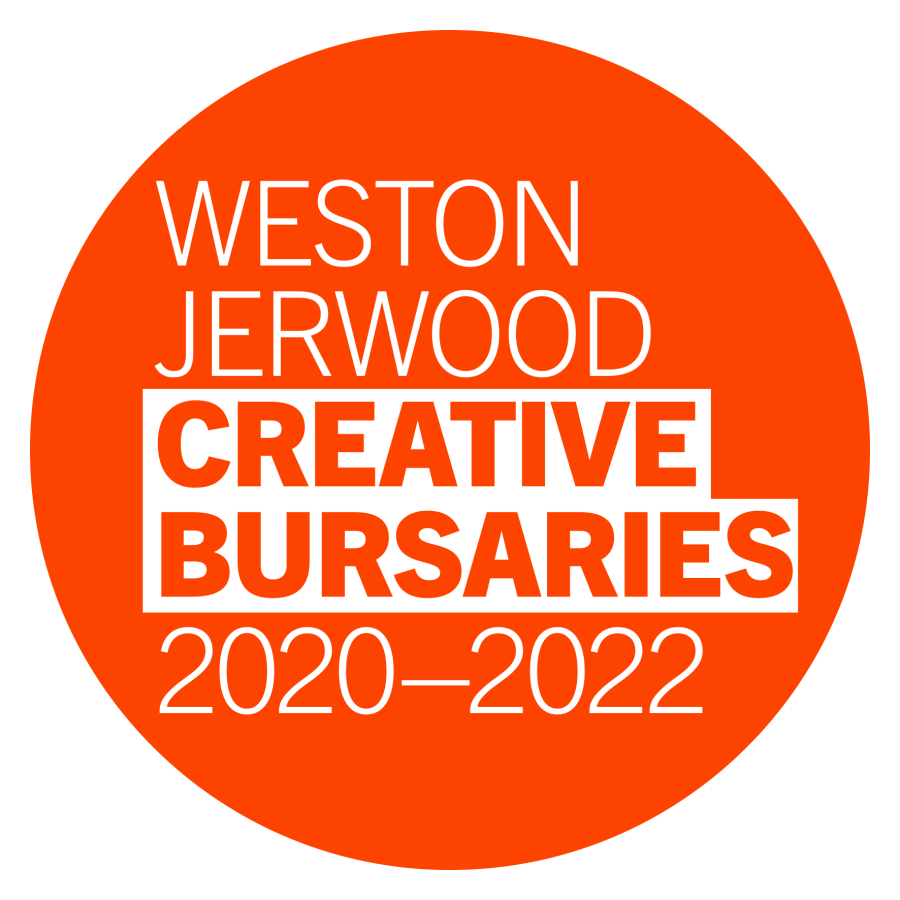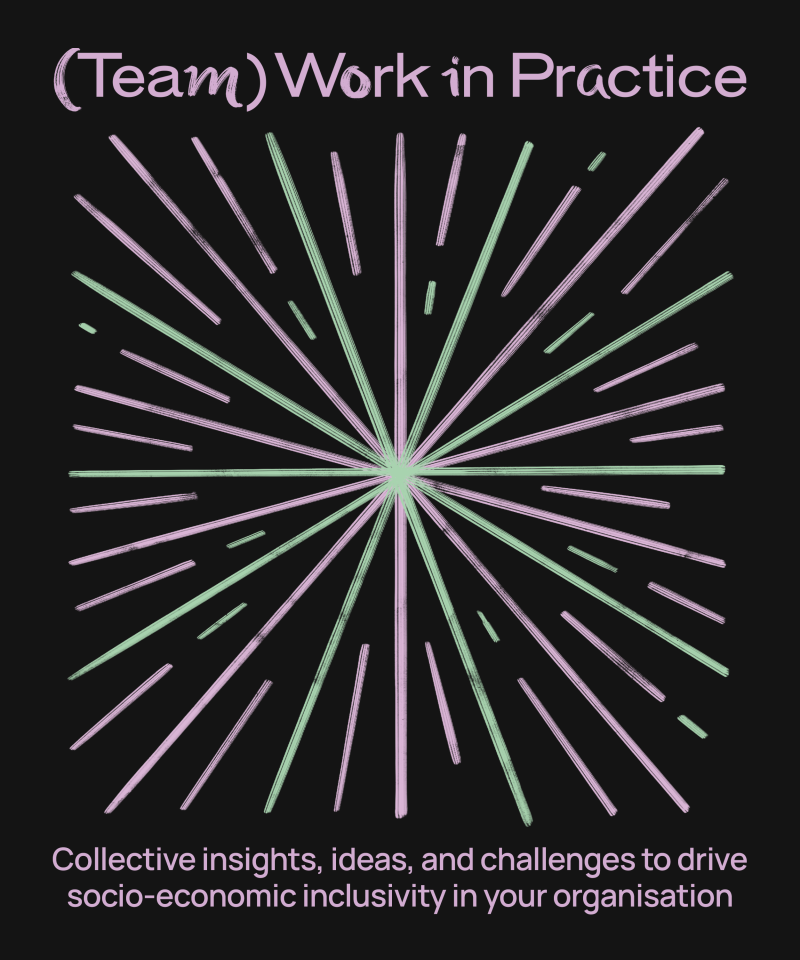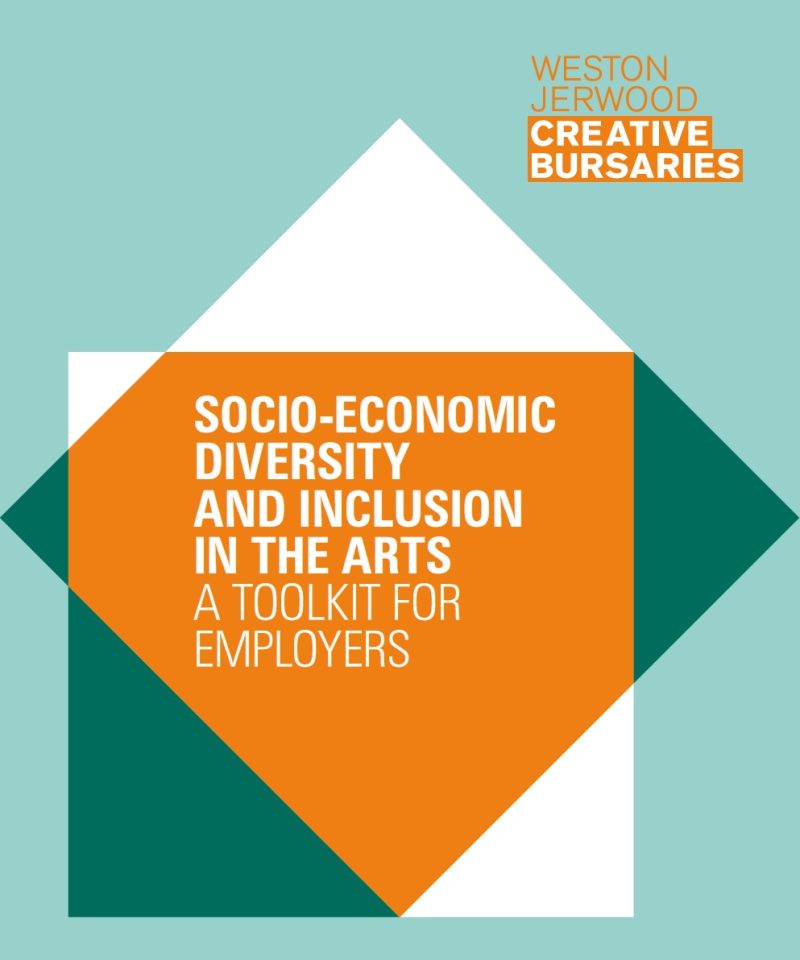Annabel Jackson Associates. 2019. The Weston Jerwood Creative Bursaries: Evaluation Report 2017-19. External evaluation of the third edition of the Weston Jerwood Creative Bursaries, delivered by Jerwood Arts in partnership with the British Council, which broadened the programme through the addition of international placements and an international training trip, new financial support for self-directed professional development, and an increased focus on evaluation and sharing learnings from the programme.
Annabel Jackson Associates. Forthcoming 2023. Weston Jerwood Creative Bursaries: Evaluation Report 2020-22. External evaluation of the fourth edition of the Weston Jerwood Creative Bursaries, designed and delivered by Jerwood Arts, and supported by people make it work, Professor Dave O’Brien, and Annabel Jackson Associates Ltd., which expanded the eligibility criteria to include non-graduates, added an organisational development programme to drive inclusive practice in Host organisations, and restructured other support elements to form a bespoke follow-on programme for Fellows.
Anti-Racism Touring Rider. 2021. Anti-Racism Touring Rider. Toolkit coordinated and supported by a group of national touring theatre companies and based on consultation with organisations and freelancers across the country, that aims to establish a baseline of expectations and support for anti-racist practice among stakeholders on a touring production.
Art Fund. 2022. ‘It’s about Handing over Power’: The Impact of Ethnic Diversity Initiatives on Curatorial Roles in the UK Arts and Heritage Sector 1998-2021. Research report by Black-led organisations Museum X and Culture& commissioned by Art Fund, that highlights the limited number, quality, and impact of diversity initiatives aimed at curatorial roles in the arts and heritage sector, and sets out recommendations for the museums sector and funders to sustainably increase diversity and equality in the curatorial profession.
Arts Professional. 2022a. ArtsPay: Survey 2022. Research report by Arts Professional and Baker Richards on pay in the arts and cultural sector, based on an online survey with over 2,000 responses from full- and part-time employees, freelance workers, and business owner-managers, and comparisons with the findings of the previous survey in 2018.
——. 2022b. Arts Salaries Show Evidence of Class Premium. Blog post with a deeper dive into the 2022 ArtsPay survey based on socio-economic background, showing lower earnings and a reported lack of support for workers from low socio-economic backgrounds.
The Brokerage. 2022. The Overlooked Advantage: Exploring the Strengths Rooted in the Experience of Disadvantage and the Steps Employers Can Take Towards Inclusion. Research report, based on a literature review and focus groups with young people and employers, that identifies key strengths of young people from working class backgrounds and minoritised ethnic groups, and the steps that employers can take to redress the imbalance of representation of these groups in professional jobs.
——. 2023. How to Be an Inclusive Line Manager. Short guide for anyone managing young people on internships, apprenticeships, placements, graduate schemes, or other early-careers programmes, outlining inclusive line management principles that employers can focus on to ensure that their early-careers programmes are inclusive and effective.
Brook, O., D. O’Brien, and M. Taylor. 2018. Panic! Social Class, Taste, and Inequalities in the Creative Industries. Research report, supported by Create London and Arts Emergency, that summarises a set of academic papers investigating inequalities in the creative and cultural workforce, with a focus on social class background and its intersection with other issues, including attitudes and values, experiences of working for free, social networks, and cultural tastes.
Carey, H., D. O’Brien, and O. Gable. 2021. Social Mobility in the Creative Economy: Rebuilding and Levelling Up? Research report on the causes of class-based disadvantage in the creative industries and recommendations on how to advance social mobility in the creative economy, based on an extensive literature review and 150 interviews with stakeholders, businesses, and workers across advertising, fashion, publishing, and screen.
Carey, H., et al. 2020. Getting In and Getting On: Class, Participation, and Job Quality in the UK Creative Industries. Research report from the Creative Industries Policy and Evidence Centre that analyses Labour Force Survey and Understanding Society survey data to reveal the widespread class imbalance in the UK creative industries and interaction of class with other factors, such as gender, ethnicity, disability, and skill level, to create a ‘double disadvantage’ to accessing creative industry jobs.
Contemporary Art Society. 2022. Doing the Work: Embedding Anti-Racism and Decolonisation into Museum Practice. Report with critical responses to a workshop series, co-produced by the Contemporary Art Society and the Decolonising Arts Institute at the University of the Arts London, that aimed to support museum professionals to engage meaningfully and practically in anti-racist and/or decolonial practice.
Creative Access. 2022. Creative Access Disability Survey Results: 2022. Research report on disability equity in the creative industries, based on a survey of 770 creative industries professionals who identify as disabled, Deaf, or neurodivergent, with recommendations on how creative employers can improve access for disabled applicants and support progression within the sector.
Creative and Cultural Skills. 2020. Best Practice Recruitment Guide for Creative Leaders. Guide created by Creative and Cultural Skills as part of a national programme to ensure a more diverse intake of talent and a broader range of routes into the creative industries, which aims to help employers reflect on their approach to recruitment and ways to improve their recruitment processes to support greater diversity and inclusion in the workplace.
Culture Collective. 2022. Accessible Recruitment: What We’ve Learned So Far. Blog post with reflections from three organisations which are part of the Culture Collective network of 26 participatory arts projects across Scotland, on what they have been doing to make their recruitment processes more accessible.
Inc Arts UK. 2020a. Hold On: Diversity and Managing in the Arts. (full report / summary report) Research report produced in collaboration between Inc Arts UK and the Bridge Group, which examines inequality in the arts management workforce and provides recommendations for advancing ethnic, socio-economic, and gender diversity, based on a survey of over 500 people working in a range of arts management roles and interviews with 60 people from low socio-economic backgrounds.
——. 2020b. Inc Arts Unlock. Toolkit that offers arts organisations a practical, step-by-step process to take anti-racist action in the workplace, comprising over 100 actions based on the testimony, recommendations, and demands of those with lived experience of racism in the arts.
Jerwood Arts. 2017. Weston Jerwood Creative Bursaries: 2014-16 Evaluation Report. Internal evaluation of the second edition of the Creative Bursaries programme, designed and managed by the Jerwood Charitable Foundation (now Jerwood Arts) with the support of a consortium of private trusts and foundations, which expanded the programme to UK-wide and greatly increased the professional development support offered to participants through the Andrew Lloyd Webber Foundation Training Programme.
——. 2019. Socio-Economic Diversity and Inclusion in the Arts: A Toolkit for Employers. Toolkit developed by Jerwood Arts and the Bridge Group, based on practical ideas from the Weston Jerwood Creative Bursaries (WJCB) programme, case studies from WJCB Host organisations, and research and advice from other sectors.
Jesse, Raquel. 2022. They Look Down on Us: Insights from the Diverse Working Class on Race and Class in Britain Today. Drawing on interviews, focus groups, message testing, and a national survey of 2,200 adults, this research report gives space and voice to the lived experience and perceptions of working class people in order to reveal the diversity of this group and produce an intersectional understanding of class.
O’Brien, Dave. 2023. From Social Mobility to Social Justice: Reflections on Weston Jerwood Creative Bursaries 2020-22. Reflection paper on the changing context for the Weston Jerwood Creative Bursaries (WJCB) programme 2020-22, foregrounding the programme’s shift of focus from individual mobility into artistic and cultural jobs to organisational and structural transformations, which reflects learning from previous iterations of WJCB, and more general changes in cultural policy and cultural practice in the UK.
Social Mobility Commission. 2021a. Socio-Economic Diversity and Inclusion Employers’ Toolkit: Cross-Industry Edition. Toolkit created by the Bridge Group, in collaboration with the Social Mobility Commission and a wide range of employers, charities, and membership bodies, to support cross-industry, larger employers to attract and develop employees from all socio-economic backgrounds.
——. 2021b. Socio-Economic Diversity and Inclusion Toolkit: Creative Industries. Creative industries-focused version of the Social Mobility Commission’s toolkit for employers on supporting socio-economic diversity and inclusion, created in consultation with over 50 charities, membership bodies, and employers across the creative industries, and drawing on research from the Creative Industries Policy and Evidence Centre at Nesta.
——. 2022. The Building Blocks: An Employer’s Guide to Improving Social Mobility in the Workplace. Distilled version of the Social Mobility Commission’s Socio-Economic Diversity and Inclusion Employers’ Toolkit, with simple, first-step guidance for businesses and organisations of all sizes on data, culture and leadership, recruitment, and outreach practices to kickstart their social mobility strategy.
Social Mobility Foundation. 2022. Social Mobility Employer Index. Annual benchmarking exercise that assesses and monitors organisations’ progress in supporting social mobility, providing tailored reports to organisations on where they are performing well and how they can improve, and leading to a ranking of the top 75 employers for social mobility in the UK.
Sutton Trust. 2020. Social Mobility in the Workplace: An Employer’s Guide. Practical guide aimed at employers across all sectors looking for detailed advice to improve social mobility in the workplace, covering a wide range of issues, from measuring the socio-economic make-up of the workforce to contextual recruitment to best practice advice on routes into the workplace.
UK Theatre and Society of London Theatre. 2019. Theatre Casting Toolkit. Practical resource for anyone involved in the theatre casting process on diversifying the range of actors on stages and in rehearsal rooms, commissioned by UK Theatre and Society of London Theatre and created by Tonic based on a large-scale consultative process and extensive testing with a group of six theatres.
Unlimited. 2019. Ten Top Tips for Accessible Recruitment. Blog post with ten practical tips on making recruitment more accessible for people with disabilities, including a short film version with options for audio description and BSL interpretation.
Wee, C., and V. Spaine. 2022. Fostering Equity in the Visual Arts Sector: Findings from the CVAN Fair and Equitable Programme on Creating Conditions for Artists and Arts Workers from Underrepresented and Marginalised Communities to Thrive. Research report, produced as part of the Contemporary Visual Arts Network’s Fair and Equitable programme and commitment to instituting equity within the visual arts in England, which identifies emergent themes and recommendations for the visual arts sector around intersectionality, structural conditions, hopes for the future, stage of career, and cultures of belonging.
Wreyford, N. D. O’Brien, and T. Dent. 2021. Creative Majority: An All-Party Parliamentary Group for Creative Diversity Report into ‘What Works’ to Enhance Diversity, Equity, and Inclusion in the Creative Sector. Research report and policy recommendations to the All-Party Parliamentary Group for Creative Diversity on ‘what works’ in recruiting, developing, and retaining a diverse creative sector, based on a systematic literature review, a series of roundtable discussions with industry representatives, and submissions received through a public consultation.




